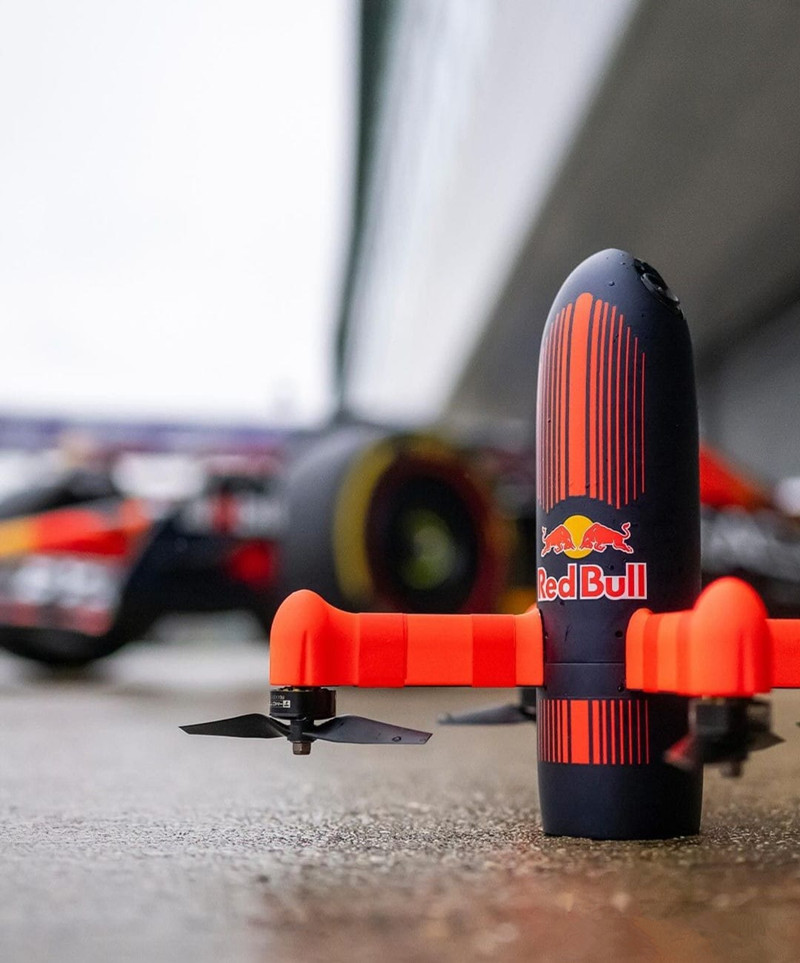New Racing Record | Red Bull Team Builds World's Fastest Drone to Chase F1
New Racing Record | Red Bull Team Builds World's Fastest Drone to Chase F1
The hottest news in the drone world these days is that Red Bull has joined
forces with Dutch Drone Gods, a team of Dutch drone specialists, to create the
world's fastest cinematic FPV drones over the course of more than a year.

(Picture: Internet)
The drone, shaped like a rocket, reached a speed of 300km/h in just 4 seconds, with a top speed of over 350km/h, and was able to keep up with Max Verstappen's F1 car, the RB20, as he drove a full 5.8km lap of the track.

(Picture: Internet)
Red Bull has been thinking about how to let the drones follow the F1 car to complete a full lap, speed has never been a problem for the drones, they can easily follow the straightaway, but in the corners of the road seems to be out of their depth.

(Picture: Internet)
Red Bull commissioned a team of Dutch drone specialists and invited fast drone legend "Quadmovr" to act as a consultant. The team worked tirelessly to solve a series of problems that plagued them, including the balance of electronics, airframe design, weight, speed, flight time and distance.

After many tests on the Formula 1 circuit, they managed to keep up with the RB8 and RB19 cars driven by reserve driver Liam Lawson and 13-time Grand Prix winner David Coulthard. The test data helped the team improve techniques in areas such as steering, braking and camera angle control.
Meanwhile, drone pilot Ralph Hogenbeek (Shaggy FPV), known for his popularity in the drone community, is preparing for the upcoming major shoot day with multiple flight simulations.
It's a whole new challenge for the pilot to keep up with a Formula 1 car traveling at over 300 km/h. He needs to be proficient in unprecedented turning, acceleration and deceleration techniques, while also keeping an eye on the drone's battery life and the state of the connection between the drone and the receiver.
In order to provide a smooth close-up view of a Formula 1 car from the drone's point of view, Shaggy FPV will control the drone's flight path via a radio remote control and observe the drone's flight path only through his goggles, which provide him with a low-resolution view.
Additionally, he will need to simultaneously adjust the camera angle via foot pedals. This required absolute hand-eye coordination on his part to ensure that he could present viewers with smooth and breathtaking footage of Formula 1 racing.
All of these efforts and challenges are validated on the day of the shoot, ultimately giving F1 viewers an immersive experience. Through the drone's lens, viewers felt the impact of the speed of the F1 cars, as if they were on the track itself.
This feat not only demonstrates the combination of technology and innovation, but also brings a unique visual feast to racing fans, which makes people look forward to more surprise performance of drones in sports events in the future.
Related Articles
-

Powering the XR Revolution: Grepow’s Custom Battery Solutions at AWE USA 2025
2025-06-06 -

Grepow to Showcase Custom Medical Battery Innovations at Medical Taiwan 2025
2025-05-21 -

Drone Training Power Guide: LiPo Batteries & Chargers
2025-05-14


















































